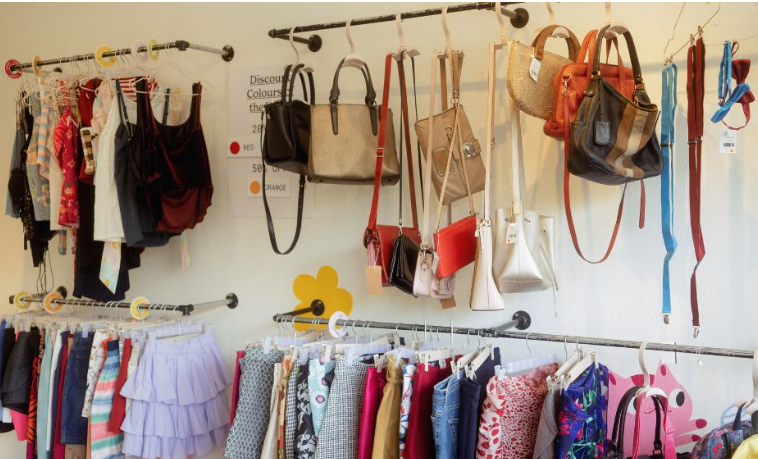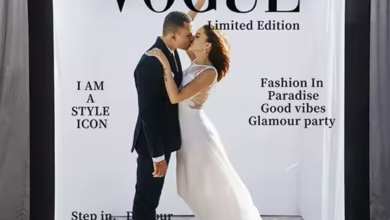Fashion collections are more than just an assortment of clothing items; they are carefully curated selections that reflect trends, cultural influences, and individual creativity. From high fashion runways to ready-to-wear styles, fashion collections are influential forces that shape the way we dress and, by extension, express ourselves. In this article, we’ll explore what makes a collection of fashion unique, how it’s created, and the role it plays in the world of style.
What Is a Collection of Fashion?
A collection of fashion is a group of clothing, footwear, and accessories designed around a central theme or concept. Designers create these collections seasonally—typically for Spring/Summer and Fall/Winter—and often align them with upcoming trends or statements they wish to make through their designs. Each piece within the collection is intended to be part of a cohesive narrative, offering a range of looks that reflect a particular aesthetic or story.
Fashion collections vary greatly across different categories:
- Haute Couture: High-end, custom-fitted garments made with exclusive fabrics and craftsmanship.
- Ready-to-Wear (RTW): Mass-produced but high-quality clothing that caters to the general market.
- Capsule Collections: Small, versatile collections with pieces that can be easily mixed and matched.
- Resort and Cruise Collections: Off-season collections created for vacation seasons, often with lighter fabrics and colors.
The Creative Process Behind a Fashion Collection
Designing a fashion collection is a complex, multi-stage process that goes beyond just sketching clothes. The journey involves inspiration, research, material sourcing, and numerous rounds of refinement. Here’s a closer look at how designers bring their vision to life.
1. Concept and Inspiration
The first step in creating a fashion collection is finding inspiration. This can come from virtually anything—nature, architecture, art, historical periods, or even current social issues. For example, a designer might draw from the colors and textures found in autumn landscapes to create a fall collection that features warm hues and layered fabrics. Some designers focus on storytelling, where each piece contributes to a larger narrative.
2. Research and Trend Forecasting
Once the initial concept is defined, designers conduct extensive research. Trend forecasting is a critical part of this process, as it helps designers identify the styles, colors, and materials that are likely to resonate with consumers. Various trend forecasting agencies analyze consumer behavior, culture, and current events to predict trends for each season. These insights help designers ensure that their collections are relevant and appealing to their target audience.
3. Sketching and Prototyping
Designers then move on to sketching the initial designs. These sketches include detailed elements like silhouettes, patterns, and fabrics. Once the designs are finalized on paper, prototypes (or samples) are created. This phase allows designers to see how their vision translates into real, wearable pieces. Adjustments are often made at this stage to refine fit, functionality, and aesthetics.
4. Material Sourcing and Production
The materials used in a collection of fashion play a pivotal role in defining its quality and appeal. From luxurious silks and wools to sustainable fabrics like organic cotton or recycled polyester, designers carefully select materials that complement their vision. Production follows once all elements have been finalized. High-end brands often manufacture in small batches to maintain exclusivity, while larger brands focus on efficiency to meet demand.
Seasonal Collections: Fall/Winter vs. Spring/Summer
Fashion collections are traditionally divided into two main seasons—Fall/Winter and Spring/Summer—with each having a distinct look and feel.
Fall/Winter Collections
Fall/Winter collections are characterized by their use of heavier fabrics, darker colors, and layering pieces. These collections often include coats, jackets, sweaters, and other cold-weather essentials. Earthy tones, muted colors, and luxurious textures like wool, leather, and faux fur are common choices in these collections. The focus is on creating warm, comfortable, and stylish outfits that can be worn during cooler months.
Spring/Summer Collections
Spring/Summer collections, on the other hand, are lighter, both in terms of fabric and color palette. Designers often use materials like cotton, linen, and silk to create breezy, breathable pieces that are ideal for warmer weather. Bright colors, floral prints, and flowing silhouettes are popular choices in these collections, emphasizing comfort and ease. Dresses, shorts, blouses, and swimwear are common items found in a Spring/Summer collection.
The Role of Fashion Weeks in Showcasing Collections
Fashion weeks are the main events where designers showcase their collections to the public, buyers, and the media. Held in fashion capitals like Paris, Milan, New York, and London, these events give designers a platform to introduce their new collections and set trends for the upcoming season.
Each fashion week follows a schedule, with specific days allocated to various designers and brands. The presentation styles vary widely, from traditional runway shows to digital presentations and immersive experiences. These shows not only highlight individual collections but also serve as inspiration for the broader fashion industry, influencing trends that eventually reach mainstream stores and consumers.
Capsule Collections: A Minimalist Approach to Fashion
Unlike traditional seasonal collections, capsule collections offer a compact, versatile wardrobe. Created with a smaller number of pieces, capsule collections prioritize quality and functionality over quantity. These collections often consist of timeless basics like blazers, jeans, dresses, and tops that can be easily mixed and matched to create multiple looks.
Capsule collections appeal to the growing movement of minimalism in fashion, where consumers prioritize sustainable and ethical practices. Brands like Everlane and Uniqlo have gained popularity for offering capsule wardrobes that emphasize functionality and simplicity.
Sustainable Fashion Collections
With the growing awareness of environmental and social issues, many designers and brands are focusing on sustainable fashion collections. These collections aim to minimize waste, use eco-friendly materials, and ensure ethical production processes. Sustainable fashion collections prioritize longevity, with timeless designs that encourage consumers to buy fewer, higher-quality items.
Materials like organic cotton, Tencel, and recycled polyester are commonly used in sustainable collections. Brands are also experimenting with innovative methods like circular fashion, where garments are designed to be recycled or repurposed at the end of their life cycle. Sustainable fashion collections address the industry’s environmental impact while offering consumers stylish, responsible choices.
How a Fashion Collection Impacts Personal Style
A collection of fashion offers more than just clothing; it provides individuals with a variety of options to express their personal style. Each collection presents unique aesthetics, allowing consumers to align with a particular designer or brand that resonates with their identity. From edgy streetwear to elegant evening wear, fashion collections give individuals the ability to build wardrobes that reflect their unique tastes and lifestyles.
Personal style is influenced by many factors, including cultural background, profession, and interests. Fashion collections give people the tools to create a wardrobe that tells their story, enhances their confidence, and reflects their values.
Building a Personal Collection of Fashion
For fashion enthusiasts, building a personal collection of fashion can be a rewarding hobby. A personal fashion collection can include carefully curated items from favorite designers, rare vintage finds, or simply pieces that hold sentimental value. Collectors may focus on specific designers, eras, or types of clothing, such as outerwear or accessories.
Building a fashion collection takes time and patience, but it allows individuals to cultivate a wardrobe that reflects their personality and aesthetic preferences. By choosing pieces with meaning, collectors create a sense of continuity and purpose in their style, making each item a cherished part of their collection.
Conclusion: The Timeless Appeal of a Fashion Collection
A well-curated collection of fashion is more than just a lineup of clothes; it’s a powerful form of self-expression, a celebration of creativity, and a reflection of the cultural zeitgeist. From seasonal collections that set trends to capsule wardrobes that encourage minimalism, fashion collections offer a wide range of styles for every taste and lifestyle. As the fashion world continues to evolve, collections will remain an essential part of how designers convey their artistry and how individuals express themselves through their unique styles.




